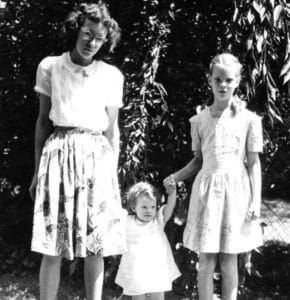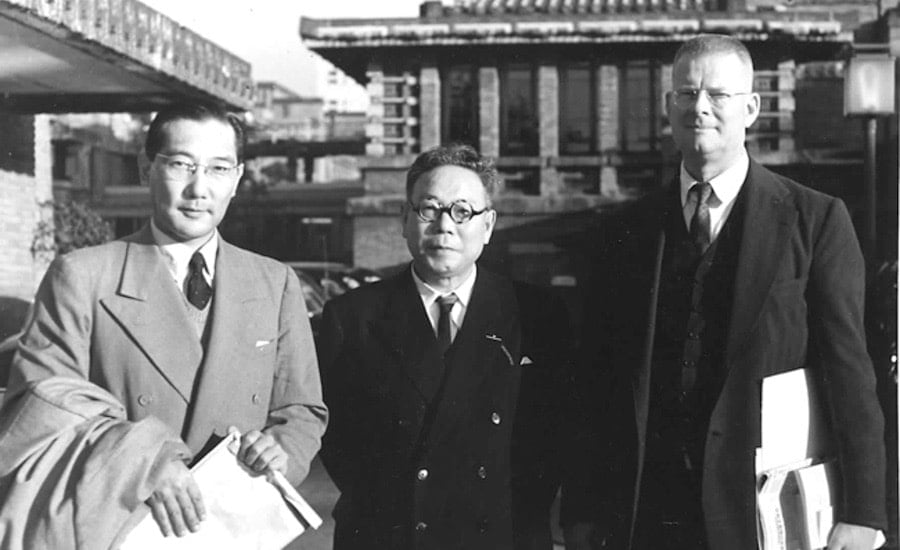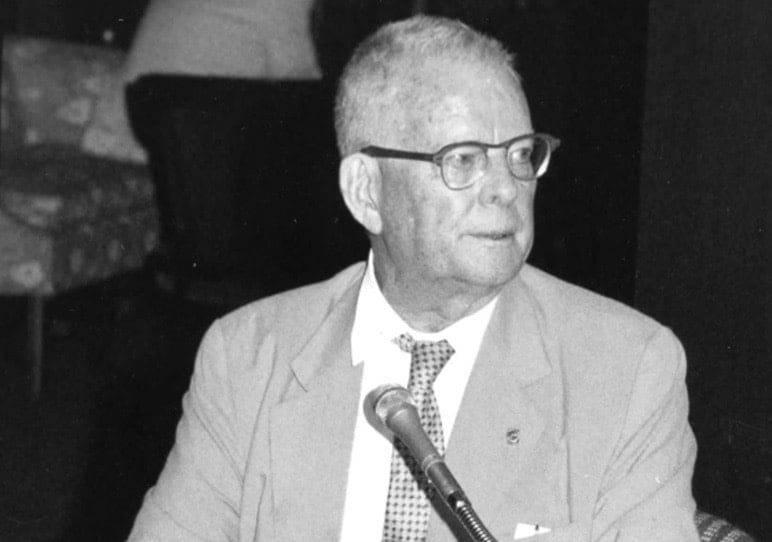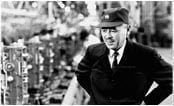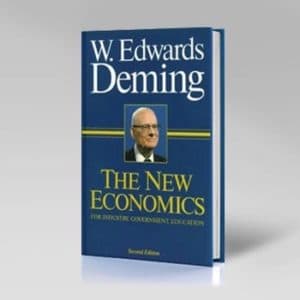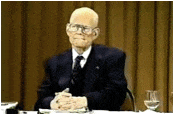Humble Beginnings & A Big Influence
1900 - 1917
Humble Beginnings & A Big Influence (1900 - 1917)
The formative years of W. Edwards Deming were shaped by a frontier upbringing that extolled the importance of people, the value of cooperation, and the deadliness of wasted resources. There is no doubt that these values shaped his life and his beliefs of doing the best you can, continually seeking to improve upon that effort, and supporting the people you are responsible for.
October 1900
W. Edwards Deming is born in Sioux City, Iowa on October 14.
1902
Brother Robert is born.
1903-1906
Lives on the 300-acre Edwards farm, located between Ames and Des Moines, Iowa.
1906
They are among the first group of settlers in Powell, Wyoming. The marginal existence shared by this community engenders in Deming a lifelong habit of thrift and hatred of waste. His family's participation in barn-raisings and quilting bees instilled in him a sense of community and working together.
1906
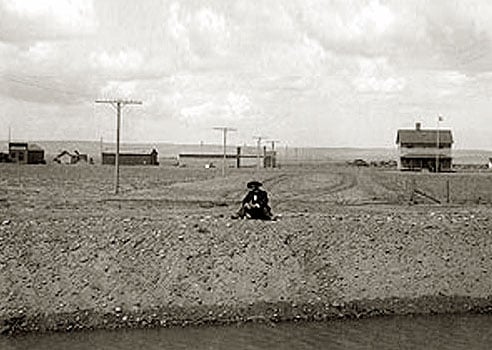
At the time, Powell was the largest water reclamation project in the US. Irrigation was made possible by the new dam in nearby Cody, with sugar beets as the prized crop.
In his Four-Day Seminars, Dr. Deming recalled, from his youth, finding full page advertisements in the local newspaper, placed by the Great Western Sugar Company of Denver, Colorado. These ads included advice to farmers on when to plant the beets, when to thin them, and when to harvest.
1909
Sister Elizabeth is born.
Finishing Education, Starting A Family And Career
1917 - 1926
Finishing Education, Starting A Family And Career (1917 - 1926)
This period in W. Edwards Deming's life is that of a young man beginning to reach out and hit his stride inside and outside the halls of academia. It's also a time of building a new family, and character building through a burgeoning set of signature traits: a tireless learner, educator, worker, and devoted husband and father.
1917 - 1921

W. Edwards Deming attends college at the University of Wyoming in
Laramie, supporting himself by doing all kinds of work; earns B.S.
degree in engineering.
1920
Mother dies in Rochester, Minnesota.
1921 - 1922
Teaches in the School of Engineering, University of Wyoming, while studying mathematics at the same time.
June 1922
Marries Agnes Belle.
1922 - 1924

Assistant professor of physics at the Colorado School of Mines.
In the summers he attends the University of Colorado, receives a master's degree in mathematics and physics in 1925.
1924
Adopts daughter Dorothy at 14 months old.
1925
Earns master's degree in physics and mathematics from University of Colorado.
1925 - 1926
During two summers, works at Western Electric's Hawthorne Works in Chicago. Hawthorne Works is a site for mass production of telephone equipment. During this time, the famous Hawthorne Experiments on industrial productivity are run.
1926

Pursues doctoral work in mathematical physics at Yale University, with a part-time teaching position.
Deming is formally awarded the degree in June 1928. His Ph.D. dissertation is on the packing of nucleons in the helium atom: "A Possible Explanation of the Packing Effect of Helium."
Professional Gains Tempered By Personal Loss
1927 - 1939
Professional Gains Tempered By Personal Loss (1927 - 1939)
In roughly a 10-year span, W. Edwards Deming experiences some of the highest and lowest points in his life. Professionally, he makes tremendous strides in combining groundbreaking theories in statistical analysis with real-world applications. In his personal life he is rocked by the passing of his young wife and father, only to find the strength and courage to remarry and rebuild.
1927
Takes job as a mathematical physicist with the United States Department of Agriculture (USDA) Fixed Nitrogen Research Laboratory in Washington, DC.
He meets Walter Shewhart, who will have a great effect on his future. Shewhart, a physicist at Bell Telephone Labs, invented what we know today as the statistical control chart. It allows the variation of the process to be observed by management with radically new insight, making feasible prediction of future performance in a stable process.
1930
Becomes a lecturer at the USDA Graduate School. Over several years he brings as lecturers many of the great statistical thinkers of the day, and writes dozens of papers, at first limited to theoretical physics but later extending to statistical methods.
November 1930
Wife Agnes passes away.
1930
Father William Albert Deming passes away.
1931
Publishes first in series of articles on the properties of "Least Squares."
April 1932
Marries Lola Shupe.
December 1934
Daughter Diana is born.
1935

Begins teaching mathematics and statistics at the USDA Graduate School. Spends a year at University College in London on leave from the USDA.
He studies under the great statisticians Ronald Fisher, Egon Pearson, and Jerzy Neyman. Deming contributes to the growth and understanding of the use of statistics, especially in the area of sampling. His work influences poll takers, market researchers, and the U.S. Census Bureau.
1937
Publishes brochure with Raymond T. Birge, "On the Statistical Theory of Errors."
1937
Sponsors Walter Shewhart of Bell Telephone Labs in a four-part series of lectures on statistical quality control at the USDA Graduate School in Washington, DC.
He also sponsors lectures by J. Neyman, R. A. Fisher, John Wishart, and William G. Cochran.
Supporting His Country And Advancing His Field
1939 - 1949
Supporting His Country And Advancing His Field (1939 - 1949)
The years prior to and after WWII are a period in which W. Edwards Deming makes significant contributions to a number of U.S. government agencies through his knowledge and uses of advanced statistical methods. It's also a time of increased esteem from colleagues in his field, and growing interest in his work nationally and internationally.
1939
USDA Graduate School publishes Dr. Shewhart's lectures with Deming as Statistical Method from the Viewpoint of Quality Control.
1939 - 1946

Works for the U.S. Census Bureau as an advisor in statistical sampling techniques. He begins the use of statistically based survey techniques in the 1940 census, which greatly improve the accuracy and lower the cost of the census.
He also introduces statistical quality control techniques to improve the process of tabulating and summarizing the results. (It is the first use of statistical methods of quality improvement in a white-collar environment.)
1940
"Facsimiles of Two Papers by Bayes" with commentaries by E. C. Molina and W. Edwards Deming published. Reprinted in 1963.
1942
Retained as a consultant to the Secretary of War.
1942
Becomes an advisor on statistical education to the Statistical Research Group at Columbia University.
January 1943
Daughter Linda is born.
1943
Teaches first of many short courses in the basics of applied statistics to engineers and others in support of the war effort.
Under the direction of W. Allen Wallis of Stanford University, Deming begins Stanford statistic training program, training almost 2,000 people in two years, using the Shewhart Cycle for Learning and Improvement and the PDSA Cycle.
1946
Statistical Adjustment of Data is published. Reprinted 1964.
1946

Leaves government service to be private consultant, and joins the faculty of New York University Graduate School of Business.
1946

Statistician on Allied mission to observe the Greek elections.
1946
Consultant in sampling to the government of India (January and February 1947; December 1951; March 1971).
1947 - 1952
Member of the United Nations Sub-Commission on Statistical Sampling.
1947
Delegate from the AAAS to the Indian Science Congress, New Delhi.
1947

Called to Japan by the U.S. Occupation authorities.
General MacArthur's Supreme Command of Allied Powers (SCAP) engages Deming to help Japanese statisticians assess the problems of nutrition and housing in their devastated country and to prepare for a census to be taken in 1951. Unlike other American experts brought to Japan, Deming shows respect for the Japanese people and their culture; he treats them as colleagues instead of vanquished enemies.
1947
Made the first Honorary Member of the Japanese Statistical Society.
1947
A Chapter in Population Sampling published with Morris Hansen, William Hurwirtz, and Benjamin J. Teppen.
Transforming Japanese Industry With Honor And Respect
1950 - 1960
Transforming Japanese Industry With Honor And Respect (1950 - 1960)
If there is a shining period in W. Edwards Deming's career it would be the years he spent working with the leaders of Japanese industry during the 1950s. The meteoric rise of Japan as an industrial and economic powerhouse after WWII, and the honors bestowed upon him by Japanese society are testament to the power of his transformative theories and teachings.
1950
Receives invitation to teach the application of statistics to quality improvement from the Union of Japanese Scientists and Engineers (JUSE). Dr. Eizaburo Nishibori, a member of JUSE, and Professor Sigeiti Moriguti of Tokyo University invite Deming to lecture on statistical methods for business in a session sponsored by the Keidanren, the most prestigious society of Japanese executives, under the leadership of its chairman, Ichiro Ishikawa (also president of JUSE).
1950
Conducts first of a dozen lectures beginning at Tokyo University.
1950
Publishes book, Some Theory of Sampling
1950, 1952
Elementary Principles of the Statistical Control of Quality is published.
1951
Deming returns to Japan as a consultant and teacher to aid JUSE's efforts. He returns again in 1952, 1955 and 1956.
1951
JUSE establishes the Deming Prize.The Deming Prize was instituted by the Union of Japanese Scientists and Engineers and is awarded each year in Japan to a statistician for contributions to statistical theory. The Deming prize for application is awarded to a company for improved use of statistical theory in organization, consumer research, design of product, and production.
1952, 1953
Is an "exchange scholar" to Germany.
1947 - 1952
Member of the United Nations Sub-Commission on Statistical Sampling.
1953
Consultant, Statistisches Bundesamt, Wiesbaden.
1953
Lecturer, Universität Kiel; Institut für Sozialforschung Universität Frankfurt; Technische Akademie, Wuppertal-Elberfeld; Technische Hochschule, Nürnberg; Österreichisches Institut für Wirtschaftsforschung, Wien
1954, 1955
Consultant to the Census of Mexico, the Bank of Mexico, and the Ministry of Economy.
1955
Awarded the Shewhart Medal by the American Society for Quality Control (ASQC).
1959 - 1962
Consultant to the Central Statistical Office of Turkey.
1960
Publishes book, Sample Design in Business Research.
1960
Awarded the Second Order Medal of the Sacred Treasure by the Emperor of Japan. Emperor Hirohito decorates Deming with an award recognizing the philosophy and methods he provided to Japan, which allowed the nation to rise from destruction to the ranks of world economic power. Three decades later, when asked how he felt on receiving this honor, he said he felt unworthy. "I was lucky," he said, showing he considers himself no exception to his own teachings about the effects of the system upon individual performance.
Continuing To Make Contributions Around The World
1961 - 1979
Continuing To Make Contributions Around The World (1961 - 1979)
This period in W. Edwards Deming's life can be said to be "international in scope" and culminates in his retirement from a long-standing professorship at New York University. Indeed, his theories and teachings during this time found a wider acceptance within a wider audience, through a combination of prestigious lectures and important consulting work around the world.
1964
Lecturer, London School of Economics.
1964
Lecturer, Institut de Statistiques de l'Université de Paris.
1965
Takes a seventh trip to Japan; sees industry changes due to implementation of his ideas and writes "My Seventh Trip to Japan."
1967
Deming publishes "What Happened in Japan?"
1970 - 1971
Consultant to the China Productivity Center, Taiwan.
1971
Lecturer in Santiago, Córdoba (Argentina), and Buenos Aires, under the auspices of the Inter-American Statistical Institute.
1972
Elected as most distinguished graduate from the University of Wyoming.
1975
Consultant, "retires" from teaching; becomes emeritus professor at New York University.
America Discovers Deming, And His Legacy Continues To Grow
1980 - 1993
America Discovers Deming, And His Legacy Continues To Grow (1980 - 1993)
This is a remarkable period in the life of W. Edwards Deming, including a new found level of interest by Americans in his theories and teachings. It's also a period of nonstop lecturing to tens of thousands of people, consulting for leading corporations, and prolific writing. All for a man who when asked why he continued to work so hard so late in life, characteristically answered, "So much to do, and so little time."
1980
NBC airs documentary "If Japan Can, Why Can't We?" on June 24.
Deming gains belated national attention in his own country for the significant contribution of his philosophy to Japan's amazing business success. It becomes the turning point for American quality control and exposes American companies to Deming's work.
1980
Begins teaching his Four-Day seminars and travels worldwide.
1982
Publishes book, Quality, Productivity and Competitive Position.
1982
Publishes book, Out of the Crisis.
In this seminal book, Deming offers a theory of management based on his famous 14 Points for Management and shows how American companies require nothing less than a transformation of management style and of governmental relations with industry. In simple, direct language, he explains the principles of management transformation and how to apply them.
1983
Recipient of the Taylor Key Award, American Management Association.
1983
Elected to the National Academy of Engineering.
1983
Recipient of the Samuel S. Wilks Award from the American Statistical Association.
1984
Daughter Dorothy dies.
1985 - 1993
Named Distinguished Professor, Columbia University.
1986
Statistical Method from the Viewpoint of Quality Control republished by Dover Press with a foreword by Deming.
1986
Inducted into the Science and Technology Hall of Fame, Dayton, Ohio.
June 1986
Wife Lola dies from heart failure.
June 1986
Recipient of the Distinguished Career in Science award from the National Academy of Sciences.
1987
Defines his System of Profound Knowledge and begins to record the The Deming Video Library.
The Deming Video Library is the authoritative presentation of Dr. Deming's theories and teachings. Clare Crawford-Mason creates it in collaboration with Deming. Crawford-Mason is the producer of "If Japan Can, Why Can't We?", the NBC white paper that introduced Dr. Deming and his ideas to the West, setting off the quality revolution.
1987
Awarded the National Medal of Technology by President Reagan.
1987
U.S. establishes its version of the Deming Prize, the Malcolm Baldrige National Quality Award.
1991
Inducted into the Automotive Hall of Fame.
1992
As a result of Deming's consultations, Ford Taurus becomes the best-selling car in America and Ford moves into second place in U.S. and world automobile sales.
1993
Publishes book, The New Economics.
In this book, Deming details his System of Profound Knowledge, which consists of four interdependent parts: appreciation for a system, knowledge about variation, theory of knowledge, and psychology. He shows how a style based on cooperation rather than competition can help people develop joy in work and learning at the same time that it brings about long-term success in the market.
1993
Founds The W. Edwards Deming Institute®
December 1993
Dies on December 20 in Washington, DC.















